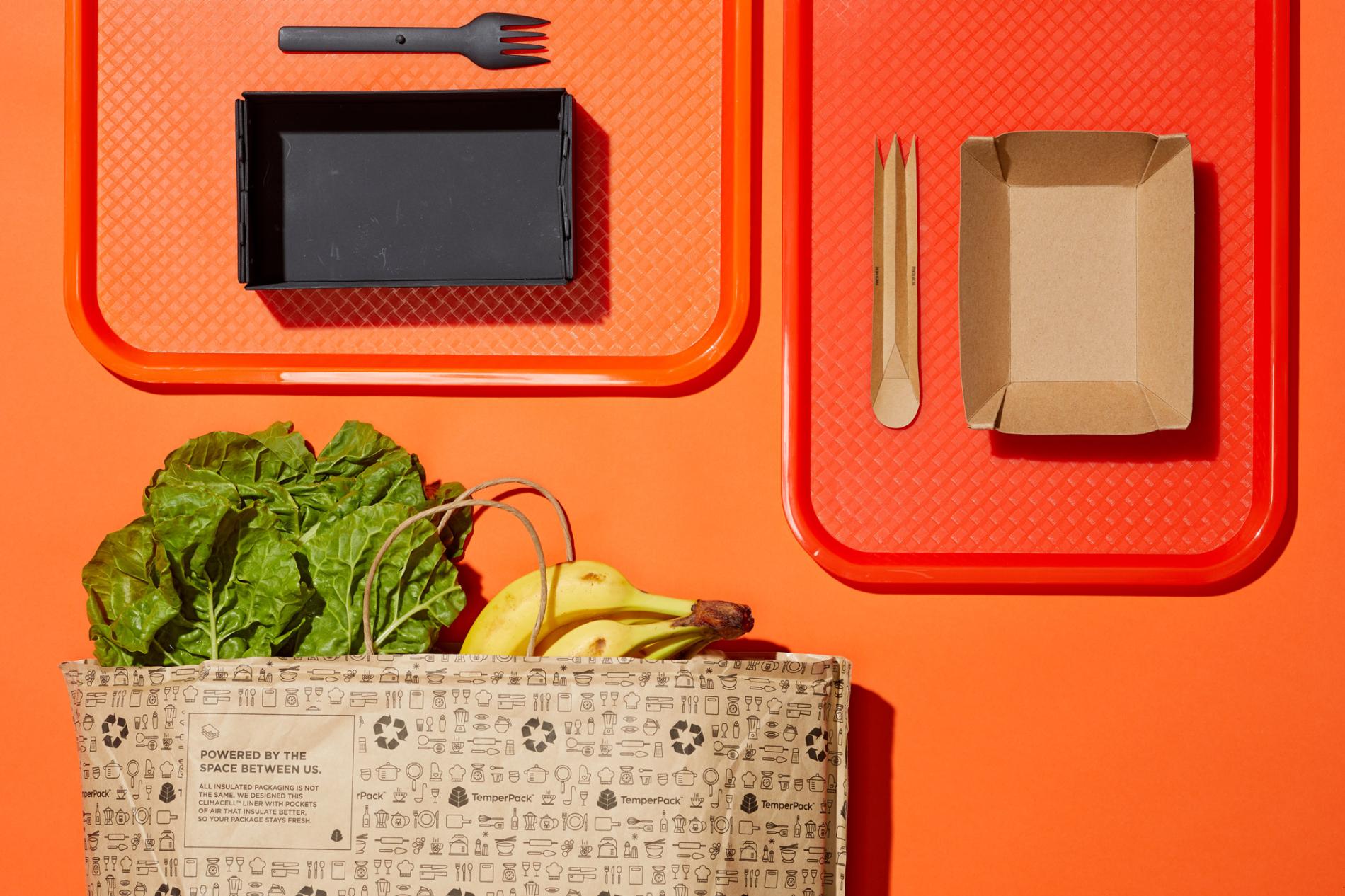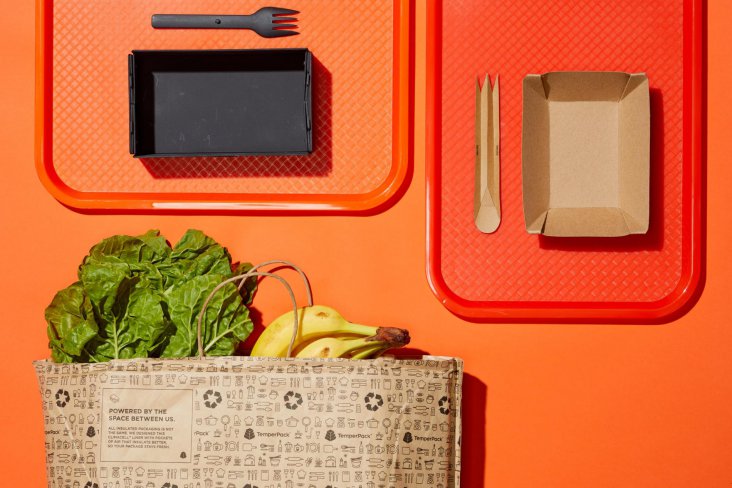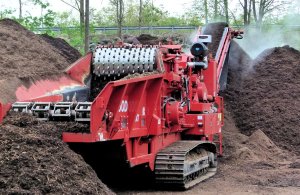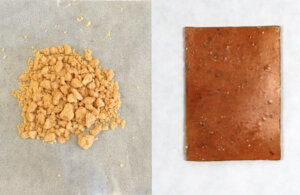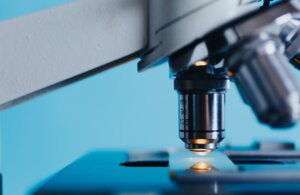(Credit: Rebecca Hale, National Geographic)
Around tables strewn with Exacto knives, bowls, cutting boards, tape, funnels, and bags of hemp powder, mushroom parts, and sugar, a dozen graduate students from the packaging and industrial-design departments at Pratt Institute, in Brooklyn, New York, brainstormed - Elizabeth Royte tells in her article on Nationalgeographic.com.
Their brief? To create new forms of food packaging to replace the unsustainable designs upon which modern life seems to depend: single-use plastic beverage cups, lids, straws, and bottles.
Focusing on the long-lived detritus that typically accompanies take-out meals, the students baked and 3D-printed straws made of sugar and agar—a gelatinous substance derived from seaweed. They hand-shaped bowls from mycelium, the threadlike roots of mushrooms. One team designed sheets of black plastic that folded into take-out containers (seen in image above) and could be returned to a collection point, sanitized, and reused ad infinitum by a consortium of take-out chains. Another duo crafted an ingenious paperboard box with a fold-it-yourself fork/spoon combo that diners tear from a perforated edge (above). When lunch is over, everything gets pitched into a compost bin, which in an ideal world is, of course, never far away.
“We’re seeing a tremendous acceleration in the demand for packaging alternatives as the unintended consequences of plastics become more visible, both locally and globally,” says Kate Daly, of Closed Loop Partners, a social-impact investment fund that focuses on waste.
Of the 78 million metric tons of plastic packaging produced globally each year, a mere 14 percent is recycled. Lightweight and floatable, plastic that escapes collection flows into our oceans—nine million tons annually—most of it from developing nations that lack the infrastructure to manage it. The problem is expected to get worse as those nations grow richer and inevitably start consuming more packaged foods, and as many others in an increasingly convenience-obsessed world continue to purchase meal-kit and grocery services—which generate considerable packaging—and take-out foods.
Vid source:
A Brief History of How Plastic Has Changed Our World | National Geographic
